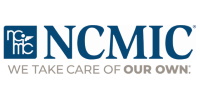Thursday, June 6, was the last scheduled day of New York’s 2024 legislative session, but we went into overtime. The Senate completed their business on Friday, June 7 around 8:30 p.m. while the Assembly worked through the night and completed their work just after 7:00 a.m.
Saturday, June 8.
The legislative session in Albany is normally measured in two phases: budget time, which runs until sometime around the April 1 budget deadline, and post-budget, which runs from then until the end of the session. Traditionally, the post-budget phase lasts about eight weeks.
However, this year’s post-budget phase was truncated because of a late State budget and a late observance of the Passover holiday, which significantly impacted how the session concluded. The normal eight-week end of session period was only five weeks, making it difficult to garner momentum for the large-scale legislative priorities that we tend to see at the end of a legislative session.
Usually, we see several of these high-profile mass impact issues being addressed at end of session, in what Albany parlance is called the “big ugly.” These significant issues get negotiated together, and the Senate, Assembly and Governor work together to reach an agreement, which usually results in smaller legislative priorities for each party getting added to the mix. Thus, we have a final legislative package that reflects a negotiated package that addresses the priority issues. Since Governor Hochul has become Governor, we have not seen these “big ugly” packages come together. Often, the Senate and Assembly each have their own priorities, and in some cases, negotiate with each other to reach a deal that does not include the Governor. This means that the negotiations on many of these issues now comes after the bill has passed, and the end of session moves quickly and somewhat unpredictably.
Perhaps the most unpredictable element of this year’s end of session was the announcement by Governor Hochul on Wednesday, June 5, that congestion pricing would be “indefinitely paused.” Congestion pricing was passed by the New York State legislature over a decade ago and would have implemented a toll in the central business district of Manhattan with the stated goal of reducing traffic congestion. This plan had gone through a lengthy, and sometimes controversial, implementation process. After years of review, court challenges and studies, the MTA had planned to implement congestion pricing beginning on June 30 and had already signed a $500 million contract with a company that had begun the installation of the equipment and cameras. Congestion pricing was designed to generate $1 billion a year to pay for the MTA capital plan and bolster and expand public transportation in New York City. The pause of congestion pricing also pauses this funding. The Governor, Senate and Assembly discussed potential revenue replacement sources for the MTA but no deal was reached. This will likely be dealt with in a special session later this year or early in the next session.
While there was no “big ugly” to mark the end of the legislation session, there were several high-profile legislative initiatives that gained momentum at the end of session. Two of the most significant bills would regulate social media use among minors. The first bill, the “Stop Addictive Feeds Exploitation (SAFE) for Kids Act,” would require parental or guardian consent for children under 18 to access algorithms tailoring social media feeds. The second bill, the “Child Data Protection Act,” would limit the ability of companies to collect personal data from children. These bills were strongly opposed by industry, especially because of the difficulties inherent in enforcing age verification requirements.
Several other high-profile issues such as extended producer responsibility (EPR) and the New York Heat Act, which had both been legislative priorities for a host of environmental groups in New York, did not get done in the final hours of session. Given this, and the congestion pricing uncertainty, the rumblings have already begun that we may be back for a special session at some point in the coming months. We will be monitoring this closely.
With session having concluded for now, everyone’s focus will turn to the upcoming elections. Primary elections will occur across the State on Tuesday, June 25. For the General election on Tuesday, November 5, all 213 seats of the Legislature will be on the ballot as are all members of the U.S. House of Representatives, the United States Senate seat currently occupied by Senator Kirsten Gillibrand, who is running for reelection, as well as the seat for President of the United States. There are also many local races that will be on the ballot. We already know that there are many members of the Legislature who are retiring or seeking another office, so there will be many new members in the next legislative session. In addition, many of those leaving are chairs of key committees, so we will see many new committee chairs next year, especially in the Assembly.
We will be in touch regarding specific legislative issues of importance to you and provide summaries of key issues in the coming weeks. We will also be in touch if a special session is called to address outstanding issues. We will also discuss next steps on your legislative priorities and plans regarding the meetings and hearings that will take place in the next few months. For those who are marking their calendars, the 2025 legislative session will begin on Wednesday, January 8.
As always, if you have any questions, please feel free to reach out.




